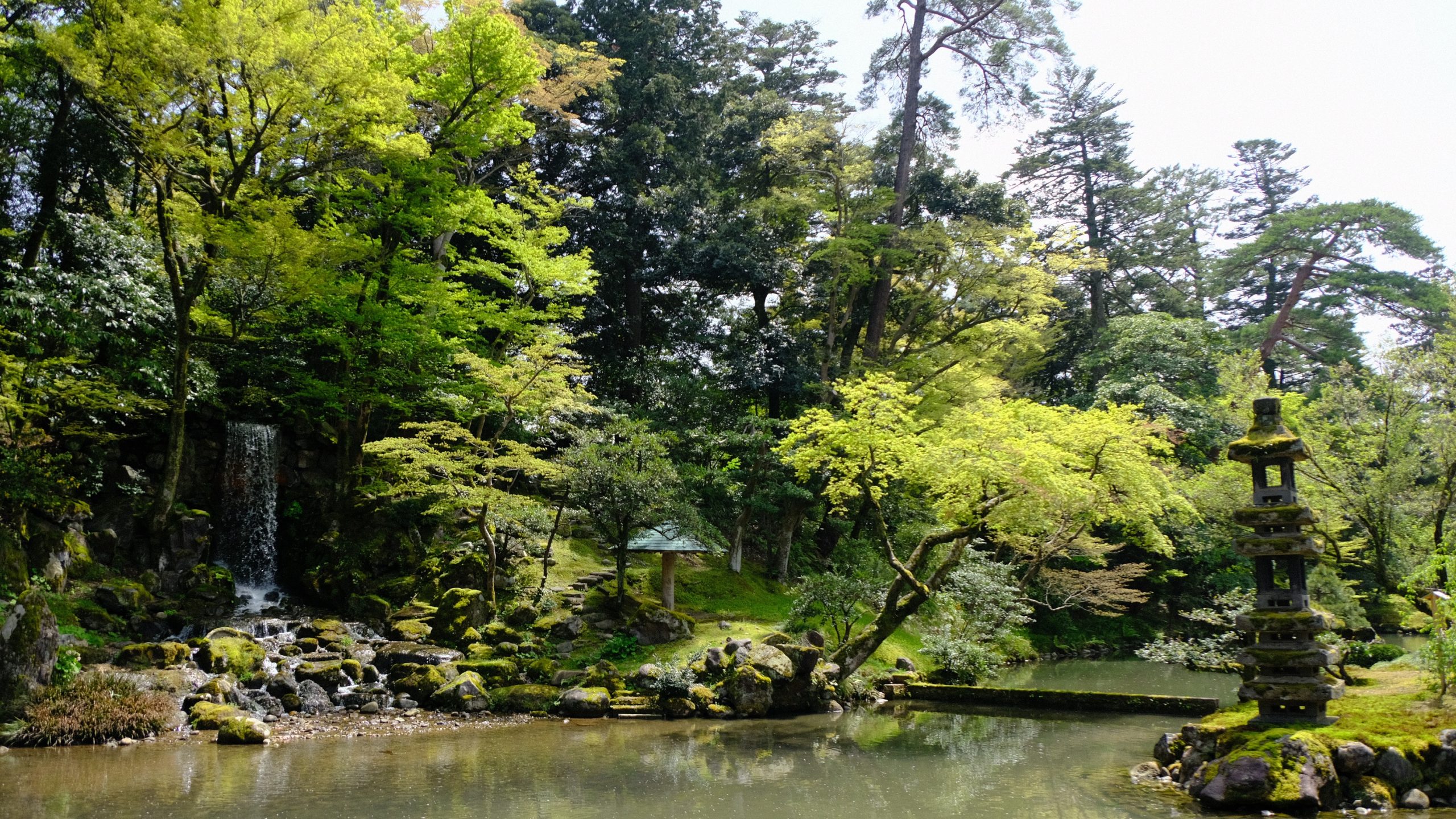Kenrokuen is said to be one of the (top 3) most beautiful gardens in Japan and is also wonderful to visit any season of the year. I had the chance to go last spring. I thought I had missed the sakura, but luckily, the cherry blossoms were still in bloom. 🙂
Admission to Kenrokuen is JPY 320 for adults and JPY 100 for children. If I remember correctly, senior citizens can enter for free. My mother didn’t have to pay.
Anyway, let me take you on a little stroll through Kenrokuen where we spent nearly half an afternoon. 🙂







Hisagoike Pond
This area was originally known as Renchi-tei Garden, as it’s said to be where the development of Kenrokuen first began.






Meiji Monument
The Meiji Monument was constructed in 1880.


Snacks at Kotobuki
We took a short break at Kotobuki, a cozy spot near the Meiji Monument. I had kuzukiri, an arrowroot starch noodles with a hint of Yuzu flavor and topped with black beans, while my mother went for ankoro, a rice cake coated in sweet bean jam. Both came with tea and are priced at JPY450 each.
Kotobuki also sells souvenirs. I got cute pouches for my jewelry and earbuds. 🙂
Kasumigaike Pond
At the center of Kenrokuen is the Kasumigaike Pond, which was expanded in 1837 to 5,800 square meters. It has a central island, shaped like a tortoise shell, that symbolizes youth and prosperity.






Tatsumi Water System
The Tatsumi Water System or Tatsumi Yosui Canal was constructed in 1632, originally to supply water for firefighting at the Kanazawa Castle. Eventually, it was extended to irrigate Kenrokuen.

Gankou-Bashi

The Gankou-Bashi is a bridge made from red tomuro stones laid out like geese in flying formation.
Sakura blooms 🌸












I mentioned earlier that Kenrokuen can be visited year-round, any season, but I read that it’s especially beautiful in winter. The snow resting on the umbrella-like ropes that protect the deciduous trees’ branches from heavy snow, particularly around the pond, creates a stunning, almost magical scene. I hoped to see that when I visited, but I’ve just realized it’s unique to the winter season.
We were able to see most of the garden by mid-afternoon. Although it was the best time to walk around, being it was not too hot nor cold, there weren’t many people in the garden.
Kenrokuen provides free maps at the entrance, but you can also do some advance planning by browsing the official website.
Wheelchairs are said to be available, but keep in mind that some paths may be inaccessible. The entrance is located at the top of a hill, and like many places in Japan, the garden involves a ton of walking. When you visit, make sure to wear your most comfortable footwear.
Camera used (except the snacks) is Fujifilm XT-2 with various film simulations.





Leave a Reply